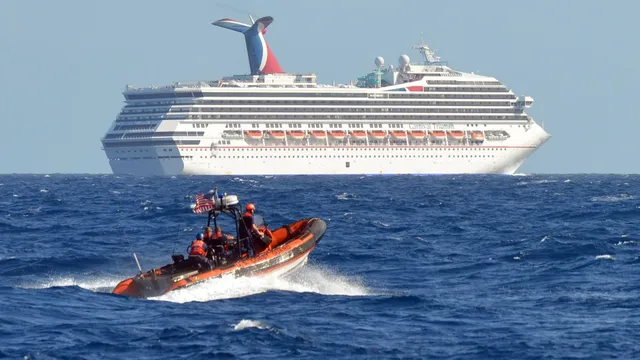
Passengers suffer nightmare journey on Carnival Triumph cruise
2025-06-25 21:47- In 2013, the Carnival Triumph was stranded for five days in the Gulf of Mexico due to an engine room fire.
- Passengers faced horrific conditions, including lack of power, ventilation, and proper sanitation.
- The incident led to public backlash and prompted Carnival Cruise Line to take accountability.
Express your sentiment!
Insights
In 2013, a luxury cruise aboard the Carnival Triumph encountered a catastrophic engine room fire that left the ship stranded in the Gulf of Mexico for five days. The failure of electrical systems rendered the cruise ship powerless, leading to a complete loss of essential services such as refrigeration, air-conditioning, lighting, and most critically, flushing toilets. With over 4,000 passengers and crew members onboard, the situation deteriorated rapidly, compelling the cruise director to instruct passengers to defecate in plastic bags. Reports indicated that passengers struggled amidst raw sewage, causing significant distress and unrest as some waited for hours to receive very limited food supplies. The cruise was intended as a four-day round trip journey from Galveston, Texas to Cozumel, Mexico, but instead devolved into a nightmare scenario where passengers were forced to endure substandard living conditions without basic necessities. After five days at sea, the ship finally docked in Mobile, Alabama, where passengers were greeted with cheers, and many expressed relief at the end of their ordeal. In response to the crisis, Carnival Cruise Line's president and CEO, Gerry Cahill, offered apologies and compensation, including full refunds and additional payments to each passenger. The incident drew wide media attention and highlighted the importance of safety measures within the cruise industry, ultimately resulting in a significant impact on public perceptions of luxury cruises and their management protocols.
Contexts
The cruise industry, a sector that provides leisure and vacation experiences to millions worldwide, is also subject to a variety of emergency scenarios that require well-defined protocols to ensure the safety of passengers and crew. Emergencies on cruise ships can range from medical incidents, severe weather conditions, fires, onboard accidents, and security threats such as piracy or terrorism. Therefore, it is crucial for cruise lines to have comprehensive emergency response plans that are frequently updated and drilled. The effectiveness of these protocols has a direct impact on the ship's ability to ensure passenger safety and manage crises efficiently. A primary component of successful emergency protocols in the cruise industry is thorough training for crew members. All crew must undergo extensive training that encompasses safety drills, crisis management, first aid, and evacuation procedures. Regular drills are mandated by maritime safety regulations, and they ensure that all staff are well-prepared to respond to various emergency scenarios. These drills cover evacuation procedures, passenger management, and communication protocols, which are crucial during an incident. Additionally, crew members are trained to handle medical emergencies, using equipment and supplies onboard to address health-related issues until professional medical services can be reached. The collaboration between cruise lines and maritime authorities plays an essential role in refining emergency protocols. Regulatory bodies, such as the International Maritime Organization (IMO), set standards for safety and emergency procedures that cruise ships must adhere to. This includes requirements for life-saving appliances, safety equipment, and emergency communication systems. Adhering to these regulations not only improves safety onboard but also enhances public trust in the cruise industry. Furthermore, cruise lines often participate in joint exercises with local authorities and agencies to ensure coordinated responses to major emergencies that may impact the vessel or port operations. As the industry evolves, so do the challenges associated with emergencies. Recent events have highlighted the need for improved emergency preparedness and response to health-related crises, such as outbreaks of infectious diseases onboard. In light of the COVID-19 pandemic, cruise lines have implemented additional protocols regarding sanitation, health screenings, and quarantine measures to protect both passengers and crew. The adaptability of emergency protocols to incorporate lessons learned from past incidents is vital for advancing safety standards and ensuring that the cruise industry can continue to provide enjoyable experiences while prioritizing the health and safety of everyone onboard.